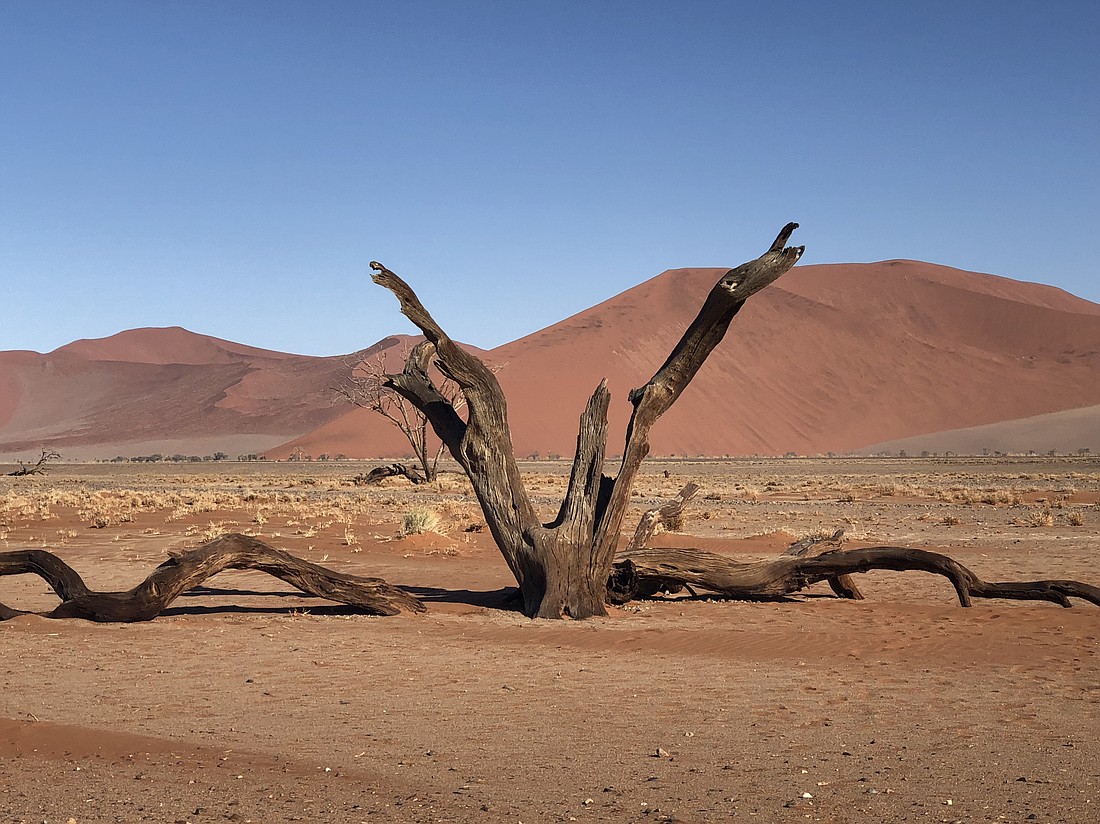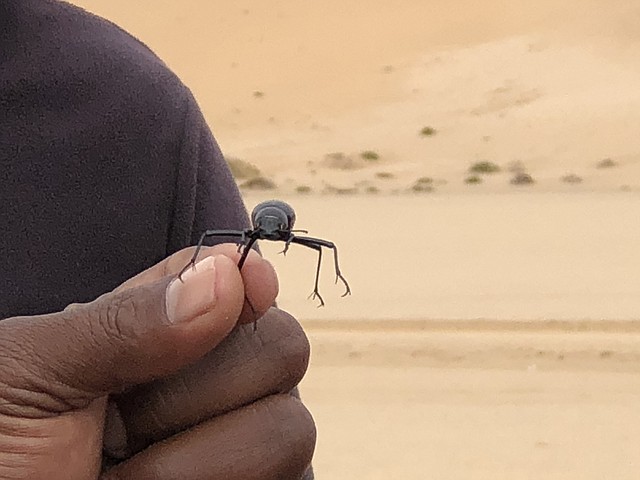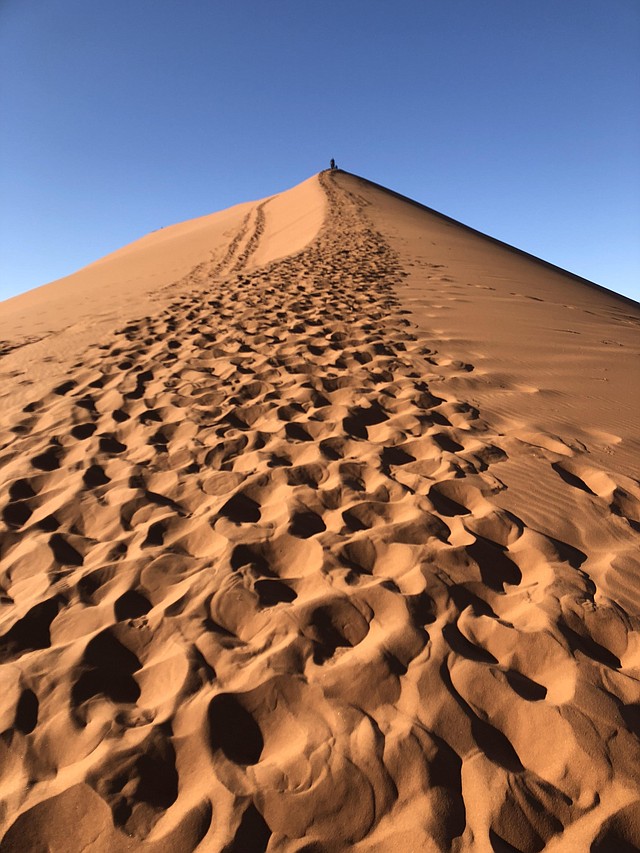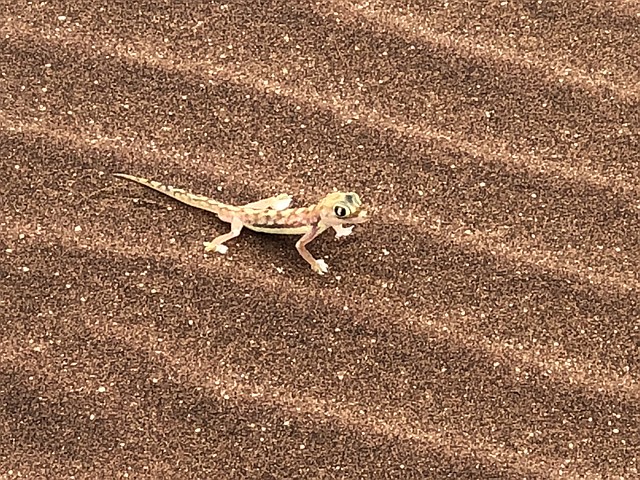Hot on the trail of Namibia's Little Five
April 1, 2019 at 6:00 a.m.
Everyone touts the Big Five in Africa –the lion, leopard, rhino, elephant and buffalo. They’re the photogenic celebrities of the savannah that travelers yearn to see on safari. And as each is sighted, you can almost hear the sound of a checkmark being made on the proverbial bucket list. But, there’s another group of creatures who fly way below the radar, yet deserve attention for their own star-studded qualities.
The Little Five of the Namib Desert consists of the lizard, snake, gecko, chameleon and spider. These creatures live in the world’s oldest desert, covering an area of around 31,000 square miles. It’s an arid place, receiving as little as a half an inch of rainfall a year with temps that reach up to 113 degrees Fahrenheit. For anything to survive in these extreme conditions, it would need to have cleverly adapted over the millennia.
The Little Five are difficult to find due to their size and most people are oblivious to their presence. You have to know how to track the tiniest of wildlife and follow subtle clues within the environment. Or, you need to be in the company of a well-trained guide, who can facilitate the discovery process.
Being unskilled in this detective-like endeavor, I opted to join a Living Desert Safari with Batis Birding Company. The tour, which departed from the coastal resort of Saukopmund, promised an up close and personal experience with desert life along the eastern part of Namibia’s major sand dune belt within Dorab National Park. The country’s grand dunes are world famous and a definite highlight for visitors, who enjoy climbing them for the stellar views they provide of the starkly beautiful Namib Desert…and, of course, for the bragging rights they gain from their accomplishments!
These dramatic natural wonders were created by sand carried via the wind off the coast of Namibia. They developed over millions of years and are characterized by their striking brick red and burnt orange colors. This vivid hue is due to their iron oxide content. As the lighting shifts during the course of the day, so does the appearance of the dunes’ tones, making them a fascinating subject for photographers. It’s a dynamic landscape that’s ever-changing and there is no rest from the relentless movement of sand in this place of space and silence.
The name Namib comes from the local Nama language and roughly translates to “an area where there is nothing.” As far as wildlife is concerned, however, this couldn’t be further from the truth. What appears to be a sandy, barren wasteland, is actually home to a host of creatures that crawl, hop and slither across the “dune sea.”
The first of the Little Five that we got to see on tour was the Palmato Gecko, a colorful nocturnal nomad, who spends most of the day burrowed under the sand. It uses its webfeet to dig holes for its home. These special feet, which also have adhesive pads, allow it to run at great speeds and to ascend the dunes with ease. The gecko’s translucent skin provides excellent camouflage against predators and its large lidless eyes are ideal for spotting prey. The eyeballs capture moisture, too, which the gecko licks off with its tongue to drink. Our guide dug until he found one of these fascinating creatures and when uncovered, it immediately froze in defensive mode. After we had a chance to examine the gecko from every angle possible, the guide carefully replaced it in the hole, where it disappeared in a flash.








